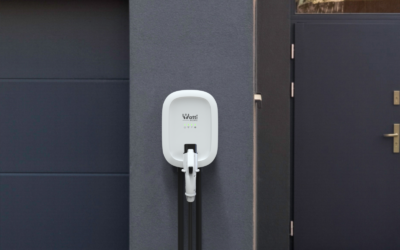The Need for Electric Vehicle Charging
Transportation makes up about 25% of greenhouse gas emissions in Canada today. If Canadians are to meet ambitious federal net-zero emissions goals, the adoption of zero emissions vehicles is a necessity. And eliminating emissions in the transportation sector will play a crucial role in our county’s goals for greenhouse gas reduction.
To support this, the Government of Canada has set a mandatory target for all new light-duty cars and passenger trucks to be zero-emission by 2035, accelerating Canada’s previous goal of 100% sales by 2040.
Barriers to Electric Vehicle Adoption
However, there are barriers to widespread electric vehicle adoption that need to be addressed.
The first is the cost of the vehicles themselves. EVs have typically been perceived as being luxury vehicles with a price tag to match, however, increased competition in the marketplace and federal and provincial rebates make owning an EV less expensive than most pickup trucks.
The second barrier to EV adoption comes in the form of so-called “range anxiety”, the fear that a consumer will run out of electricity and be stranded. The majority of EVs travel 200-400 km on a single charge, but most Canadians drive 60 km or less per day, so charging overnight will be sufficient for almost everyone. For long distance travelling, a belief prevails that there are not enough charging stations available to support longer distances. However, with the completion of the coast to coast fast charging network, and the federal government’s commitment to invest heavily in charging infrastructure, we’re overcoming these misperceptions, which will help to accelerate our rate of EV adoption.
What EV Charger Funding Is the Government Offering?
The 2019 Federal Budget committed CA$130 million over five years (2019-2024) to deploy a network of Level 2 (or higher) zero-emission vehicle charging and refuelling stations in “more localized areas where Canadians live, work and play.” This funding is being administered through the Zero Emission Vehicle Infrastructure Program (ZEVIP). ZEVIP will fund up to 50% of the total project costs for the purchase and installation of EV chargers, with maximum funding dependent on the type of charger being installed.
| Type of Charging Station | Maximum Funding |
| Level 2 (208/240V) | $5000 / connector |
| Level 3 (20 kW – 50kW) | $15000 / station |
| Fast Charging station (>50kW) | $50 000 / station |
ZEVIP funding is released in multiple rounds per year, approximately every four months, with different applicants eligible for different rounds of funding. The upcoming round of funding (which is scheduled to open in December, 2021) targets the installation of infrastructure in public places, on-street, at workplaces and multi-unit residential buildings, as well as infrastructure for ZEV fleets.
Who Is Eligible for EV Charger Funding?
Before getting into specifics of the application process, it is important to check the eligible applicants for each round of funding. Eligible Ultimate Recipients of the current round of funding include:
- Electricity or gas utilities
- Companies
- Industry associations
- Research associations
- Standards organizations
- Indigenous and community groups
- Academic institutions
- Provincial, territorial, regional, or municipal governments or their departments or agencies
How to Apply for EV Charger Funding
If your business, group, or institution falls into one of the above categories, there are still several criteria to meet to ensure funding is allocated to the project.
Total Chargers Submitted for Funding
For all projects, a minimum of one fast charger (50kW+) or 10 level 2 chargers must be submitted for funding. However, these chargers can be spread across multiple sites.
The Merit and Rationale of the Project
To demonstrate the merit of the project, you must show that installing EV chargers at your site(s) makes charging more accessible to Canadians. After outlining the project rationale, you must also include:
- A detailed timeline of the installation
- Key milestones such as obtaining permits, signing contracts, and procuring equipment
- Affirm that the installation will be commissioned and operational within 24 months of the funding decisions being announced (for this round, funding decisions are expected to be made in March 2021)
- A detailed budget for the project demonstrating that no more than 75% of the funding for the project is coming from government sources.
Other information your application needs in order to be approved include:
- Proof of incorporation or registration
- Proof of 50% secured funding of the proponent’s share of total project cost
- Proof of engagement with energy suppliers
- Proof of access to site
Why You Should Apply for EV Charger Funding
This funding is only slated to be available until 2024 or until the 130-million-dollar pot has been used up. If a building is in construction now or newly constructed, it is much easier to prepare early and take advantage of funding than be left stranded in the end.
Interested in learning more about the government funding available to outfit your business or organization with EV chargers? Get in touch with our Renewable Energy Specialist, Andrew, for more information.




